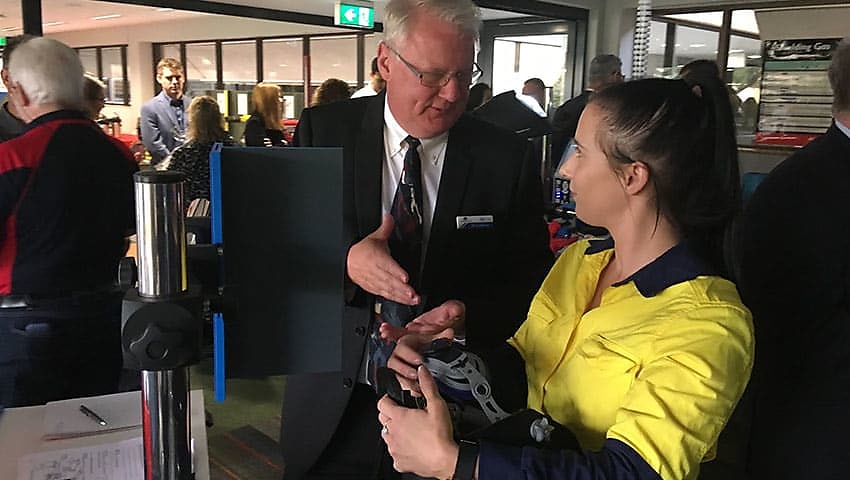TAFE SA students are accessing augmented reality technology simulation for the first time, allowing them to consolidate their welding competence and fast-track their skills.
To continue reading the rest of this article, please log in.
Create free account to get unlimited news articles and more!
The new Advanced Welder Training Centre at Regency Campus has 12 augmented reality welding simulators, which can provide instant feedback on student performance, maximise safety, and enhance the development of welding techniques through multiple practice welding without the need for time-consuming material preparation.
The centre will particularly support apprentices in Certificate III in Engineering – Fabrication. This TAFE SA qualification was the first in Australia to be endorsed last year by the Naval Shipbuilding College as having requisite welding content suitable for the naval shipbuilding industry.
Penny Johnston, TAFE SA director of defence industries, said that there were many advantages for students to use the cutting-edge technology as part of their training.
“The detailed feedback a student receives on their performance on the simulator is instantaneous and increases the rate at which they acquire an understanding of how they can improve. Students analyse the data fed back on their angles, travel speeds and arc lengths to adjust their welding performance and increase improvement,” Johnston explained.
The new simulators will ensure that local welders are ready to respond to the increased demand for their skills as part of the naval shipbuilding program and in advanced manufacturing.
Last year, the TAFE SA welding qualification was the first in Australia to be endorsed by the Naval Shipbuilding College, with the simulators assisting local welders to become job-ready and respond to the increased demand for their skills as part of the Australian government’s $90 billion continuous Naval Shipbuilding Plan.
Naval Shipbuilding College’s Paul Whetstone said, “The college is a facilitator, which helps to align training and educational institutions nationally to the needs of naval shipbuilding industry, so graduates are job-ready.”
Whetstone added that the rate at which technology advances within naval ship construction techniques is very rapid, so having people who are experienced and willing to embrace new technologies is a step in the right direction.
“The opening of the centre supports our recommendations that welding simulators be incorporated with traditional welding training to speed up the development of welding skills in novice welders.”
Geoff Crittenden, chief executive officer of Weld Australia, said: “This technology is three times cheaper, faster and more effective when compared to traditional training methods. By using this technology, TAFE SA will not only be able to upskill existing welders, but also train transitional workers and apprentices to be part of the defence program.”
The Naval Shipbuilding College was established in 2018 by the Australian government to identify and support the development of a highly skilled national workforce that will be required to deliver the $90 billion naval shipbuilding enterprise.
A workforce register is operated by the college, which enables first-time entrants, people transitioning from adjacent industries or upskilling within the industry to connect with employers or education providers so they are job-ready and able to enter or progress within the naval shipbuilding enterprise.
Stephen Kuper
Steve has an extensive career across government, defence industry and advocacy, having previously worked for cabinet ministers at both Federal and State levels.

 Login
Login








